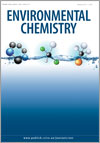EN12159Evolving research directions in Surface Ocean–Lower Atmosphere (SOLAS) science
Environmental context. Understanding the exchange of energy, gases and particles at the ocean–atmosphere interface is critical for the development of robust predictions of, and response to, future climate change. The international Surface Ocean–Lower Atmosphere Study (SOLAS) coordinates multi-disciplinary ocean–atmosphere research projects that quantify and characterise this exchange. This article details five new SOLAS research strategies – upwellings and associated oxygen minimum zones, sea ice, marine aerosols, atmospheric nutrient supply and ship emissions – that aim to improve knowledge in these critical areas.
EN12159 Abstract | EN12159 Full Text | EN12159PDF (1.6 MB) Open Access Article




